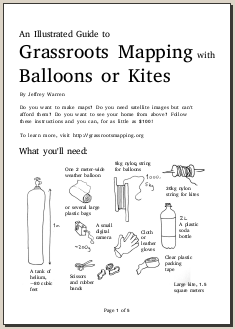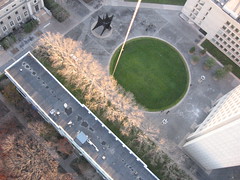October 4th, 2012 by mathew
This interview is from the summer issue of Grassroots Mapping Forum, our quarterly print publication. Subscribe here.
Shannon Dosemagen sat down with Scott Eustis of the Gulf Restoration Network to discuss the shifting sands and fortunes of the Mississippi Delta and the Chandeleur Islands
Can you tell me a bit about GRN, the work you’re doing with them, mission, some of the work that your co-workers are doing?
read more
Tags: GrassrootsMapping, wetlands
Posted in chandeleur islands, featured, grassroots mapping forum, gulf restoration network, gulf-coast, interview, restoration, syndicated | No Comments »
March 15th, 2011 by Adam Griffith
During the first week of March, students enrolled in Dr. Rob Young’s field trip course at Western Carolina University attempted to map coastal wetlands using Grassrootsmapping techniques in Beaufort County, SC. Beaufort County, SC has the most coastal wetlands of any county on the US East Coast and these wetlands are being threatened by sea level rise. Specific vegetation grows in high marsh and low marsh and an aerial view of the wetlands makes distinction of the two easier than ground based techniques.
Weather conditions during the week were very poor for balloon mapping due to 30 MPH sustained winds over two days. On the morning of the third day, seemingly calm conditions coaxed us into action, but the upper level winds carried the balloon horizontally more than vertically. We launched our Sutton Flowform 16 kite an hour later and gusts caused the Picavet suspension to swing wildly around the flying line. Some interesting images resulted.
This experience represents a core challenge of GRM techniques: weather conditions may not cooperate during the narrow time of a visit making the challenge of capturing imagery of a specific area even greater. This mission was a teaching students the basics of low cost aerial mapping, and was therefore a success, however, the imagery collected is not able to be stitched into a map of the wetland. This site is about a 6 hour drive from our university, so for future missions with the goal of mapping wetlands, we must better cope with the variable conditions.
Corey from Windpower Sports in Las Vegas (baby) suggested the following:
• Put the picavet suspension 100 ft away from the kite instead of our 50 ft.
• Use a Y shaped tail at least two times the length of the kite with a spinner sock on the end
• Use heavier weight flying line to stabilize from the front end of the kite
• Use a different kite with different ideal wind ranges
• Increase the weight of the camera
Tags: mapping, WCU, weather, western carolina university, wetlands
Posted in syndicated | No Comments »












